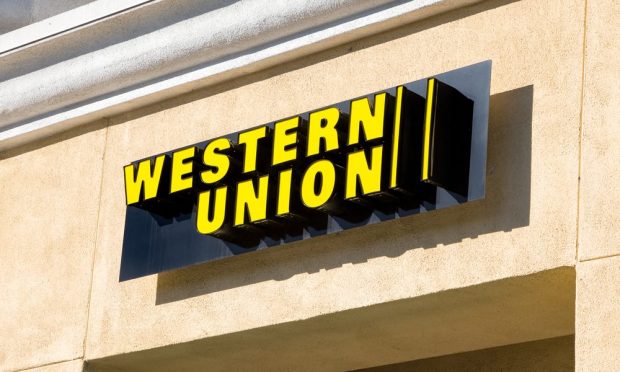Sizzle Fizzle: Amazon And Western Union Sizzle, Phone Upgrades Fizzle

In the age where news is instant and leaks are common, a genuine bit of surprising news is actually pretty hard to come by.
But Amazon and Western Union pulled off just such a shocker in this week’s big sizzle, with the announcement that two firms would be collaborating to use Western Union’s cross-border payments rails to make Amazon’s marketplace accessible to global customers who either need or prefer to pay in cash in their local currency, in their home countries.
“There are people in the world who want greater access to Amazon’s huge product selection but paying for those purchases has been a real obstacle for many customers,” said Hikmet Ersek, president and CEO of Western Union said, when the news was announced..
Ersek explained that Western Union is leveraging its money movement platform to handle the complex foreign exchange and settlement process that gives Amazon the ability to tap into consumer markets in the 200 countries that Western Union serves. Western Union processes an average of 32 transactions every second on its platform and moved $300 billion across 130 currencies in 2017, and Ersek said it is more than capable of handling Amazon volume.
“We’re opening up more consumer choices and access to online shopping for tens of millions of potential new Amazon customers,” Ersek said.
Details about the program remain under wraps and will be revealed over time by Amazon, Ersek told analysts on Western Union’s earnings call. He did note, however, that Western Union is “ready to go” and already into testing real transactions with Amazon customers. He hinted that specifics will be released by Amazon in the next few weeks.
According to Forrester Research, cross-border shopping will make up 20 percent of eCommerce by 2022, with sales valued at $630 billion. The main draws, according to Forrester, are choice, quality and cost for consumers to shop online from overseas.
But for about for about one-third of the world’s adult population (1.7 billion people) joining the eCommerce world is not an option because they lack a bank account, mobile money account or access to a credit card that can used to make purchases on eCommerce sites. These consumers, according to the World Bank’s Global Findex Database, tend to be clustered in the developing world.
Cash is very much still king in this consumer group, largely because it is the main or only option. And World Bank’s data also indicates that many consumers in the developing world also have a preference for cash that goes beyond the need to use it. These are consumers who could access digital payment methods, but who aren’t comfortable doing so and prefer to pay in person and in cash. In fact, according to the most recent edition of the PYMNTS Global Cash Index, the use of cash in growing in many developing markets. India is an example of one of the areas where digital payments are seeing rapid uptake, but consumers still have a strong affinity for the use of cash, even in eCommerce transactions. And cash transactions are growing by 10.5 percent per year. To date, cash is a 49 percent share of the average user’s wallet.
And while India is a stand out in the field, it is far from alone — these issues are seen across the developing world.
Users in launch markets will see the new WU payment option on the checkout page, one that Ersek said is designed for the customer segment that wants a simple way to buy online. Those that click on it will be sent a code and instructions on how to make the payment at a participating Western Union agent location. Western Union’s platform will also power the process for cash refunds for product returns.
For Amazon, this is a particularly notable move since Amazon has struggled to expand internationally. While domestic sales were up 35 percent last quarter, international sales were sluggish, up 13 percent year on year. Giving Amazon instant access to those markets via a compliant, global set of rails that enables cash in payment for online orders could give those results a real boost — and give the sellers who wish to broaden their own reach a boost as well.
It will be interesting to see where this launches first, and how Western Union has enabled its diverse agent network which includes both banks and post offices, to handle this new payments flow.
That said, it is clearly worthy of this week’s Sizzle.
Sizzle
B2B Payments Over Card Networks: Gaining traction beyond the paper check, as results from both Mastercard and Visa show – the former firm’s latest numbers cite B2B as 11 percent of traction. Management says that segment is growing at a mid-teens percentage rate. Visa also showed similar gains in its own B2B conduits, where such transactions accounted for 11 percent in the latest fiscal year and are nearing the $1 trillion mark.
Payment Stocks: Getting the nod from investors as they rotate out of FANG (Facebook, Amazon, etc.) and look for growth in companies like PayPal. Even in downturns the payments stocks are faring better than their once high-flying brethren amid a sea change of payments disruption and stock prices of companies like Visa and Mastercard sport more reasonable valuations.
Bank Deregulation: Gets a real push on Capitol Hill, and now gets explicit backing of Fed with eased capital and liquidity rules — which may in turn, among other impacts, open up the spigot for SMB lending.
Fizzle
Phone Upgrades: The perennial transitions to new phones seems to be on hold as in the U.S. users stick with their older phones for longer. Third-quarter data from HYLA Mobile shows that customers are waiting about 2.8 years to upgrade their phones, and that is up from 2.5 years as recently as two years ago. Some analysts estimate the wait period could stretch to as long as 33 months as smartphone prices continue to rise.
Facebook: Growth on the company’s platform is slowing and the slowdown seems widespread, as in the U.S., Canada and Europe the numbers were flat. The company gets 70 percent of its ad revenues from those markets, and so the top line has seen a notable drag, too. Volume matters, but where the volume come from matters too. Revenue user, annualized, tops $26 for the company in the U.S. and Canada, but skews lower, in say, China, where that number is around $8.90.
Late Payments: It’s a growing trend amid B2B activity in Europe, and evidenced by recent data from Atradius, especially in Western Europe. The percentage of invoices that are past due now stands at 41.8 percent at present, up from 39 percent in 2016.
